By Alex Trukan
First part of the article covered brief introduction as well as different types of ‘1v1’ situations according to the position of the defender. The second part of the article will look more critically at the whole concept of ‘1v1’ situation and how it is understood and coached. In order to better understand how does ‘1v1’ look in the game and does ‘1v1’ even exist, it is worth to consider different components that surround it. These might include: pressure of the defender, players around the attacker (attacking support), players around the defender (defending support), direction, area of the pitch, body position of the attacker/defender, tactics or even score of the game.
These components are always ever changing and influencing ‘1v1’ situation. That is why, in fact, ‘1v1’ is only a buzzword used by players and coaches that simplifies a very complex game situation. Therefore, there is never a pure ‘1v1’ situation in the game (hence a quotation mark is used). There are always other characteristics (mentioned earlier i.e. players around the attacker, score) involved in it which make every ‘picture’ in the game unique. Understanding of how these concepts influence the player on the ball and how every situation is different can help us, as coaches to provide higher quality and more realistic training for our players.
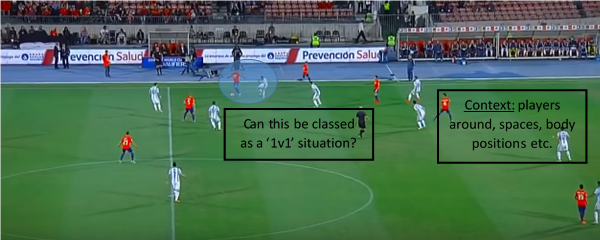
First of all, let’s have a look at the pressure on the player with the ball. The types of pressure (front/side/back) mentioned in the previous article rarely happen in isolation. It is usually a combination of defenders coming from different directions and with different distances away from the ball. That is why, it might be the case that an attacker has got one defender from the front to beat, but couple of yards away from the back there is another one chasing him what determines attacker’s speed (if he slows down, the defender from the back will be able to apply pressure). There might be also one defender coming from the side which will make the attacker more likely to dribble in the opposite direction from him, restricting his options to beat a defender coming from the front.
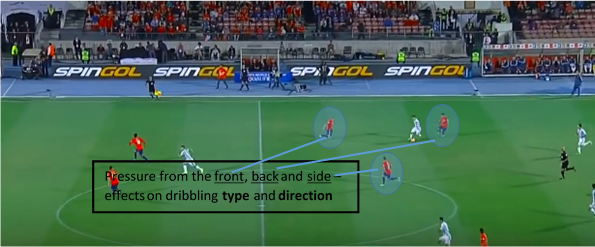
The players around the defender and spaces available is another influencer of the ‘1v1’ situation. For example, ‘1v1’ with the defender from the front who has players around him in good supporting positions will restrict the attacker to exploit the spaces in behind the defender, forcing him to dribble sideways or backwards. Also if attacking support is available, it might affect decision making of the player on the ball who will be more likely to use support rather than dribble.
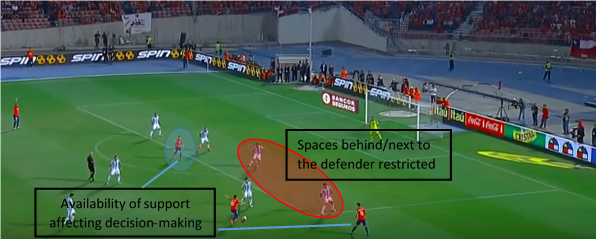
Another important component is the area in which ‘1v1’ occurs. That will usually affect objectives of the attacker and desired outcome. It will also influence the tricks used as well as change of tempo and direction. In example, when the attacker is in a good goalscoring position (i.e. in the penalty box), the objective could be to create an angle for a shot, not get past a defender. That will in turn require more upper body disguise as well as quick decision making.
[wpsharely id="2988"][/wpsharely]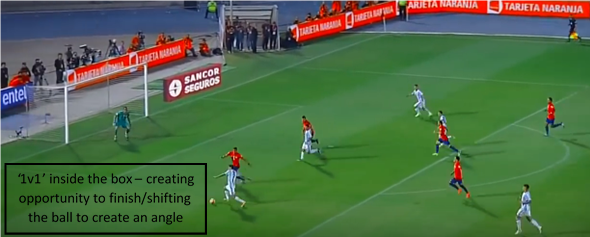
Area of the pitch in which '1v1' occurs will also influence ratio between risks (what you might lose if unsuccessful) and rewards (what you might gain if successful) involved. Attacker in the opposition's penalty box might gain a shot on target if he gets past a defender but in case he loses the ball, the opponents will be still far away from his goal (therefore the risk is low). Risks and rewards might be also influenced by the players around the ball as well as score of the game.

Finally, even small details like body position of the attacker/defender will affect the effectiveness of ‘1v1’ situation. Attacker facing the opposition’s goal is much more likely to dribble forwards and see a teammate in a better position than the attacker facing away from the opposition’s goal. Body position of the defender might also ‘guide’ the attacker in a certain way.
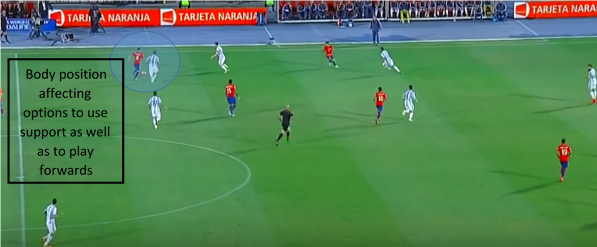
Understanding some of the components that affect the ‘1v1’ situation help us to design more effective sessions that are not only more realistic but also fit exactly into the needs of the players. It also makes us appreciate different reasons why a player was successful or unsuccessful in his dribbling.
By Alex Trukan, Development Coach, Nottingham Forest
@AlexTrukan


